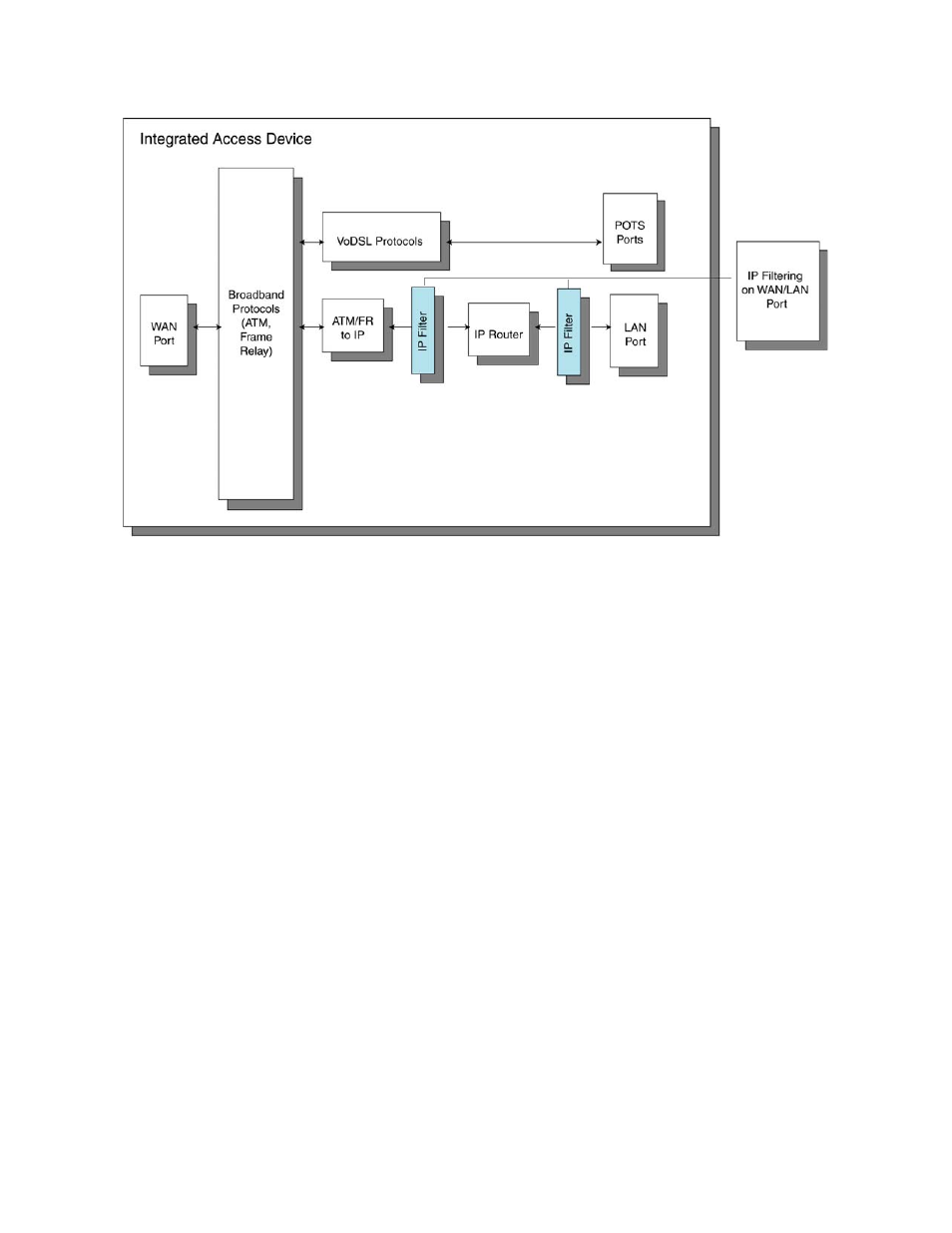Verilink 8100A (34-00237) Product Manual User Manual
Page 298

D-6
8 0 0 0 S e r i e s
Figure D-1.
IAD Block Diagram With IP Filtering Shown
IP Filtering can be applied to either WAN or LAN ports; these are the only
two that can carry IP traffic. For connections to the Internet, the WAN port is
the best choice. All examples provided below assume the WAN port is the
selected port. Although you may select the LAN port as well, it is not
recommended, as this would make your network vulnerable if support
protocols such as Telnet or TFTP are targeted. Port selection is also important
because it establishes a point of view for defining filters. An input filter on
the WAN port will block or pass packets entering the WAN port. An input
filter on the LAN port will block or pass packets entering the LAN port.
IP Filtering on a WAN port for inbound traffic is performed after NAT
has occurred. IP Filtering on a WAN port for outbound traffic is
performed prior to NAT.
IP Filtering rule sets are defined using the ifname for each interface.
The ifname for a particular interface can be viewed from Current
Configuration. In general, the ifname is an abbreviated interface name
with the port number. For example, the Ethernet interface ifname is
eth0. ATM PVC interface names would be atm0, atm1, atm2, etc.
Other ifnames include ppp0, fr0, pppoa0, hdlc0. Please note that when
creating and deleting PVCs and FR DLCIs, ifnames can change. Please
review the IP Filtering rule set after modifying WAN connections to
ensure that the rule set is still valid.
- 8108 Series IAD (34-00339.B) Product Manual 8508 Series IAD (34-00339.B) Product Manual 8208 Series IAD (34-00339.B) Product Manual 8308 Series IAD (34-00339.B) Product Manual 7500p Series IAD (34-00334.B) Product Manual 7200p Series IAD (34-00334.B) Product Manual 7000 Series (34-00334) Product Manual